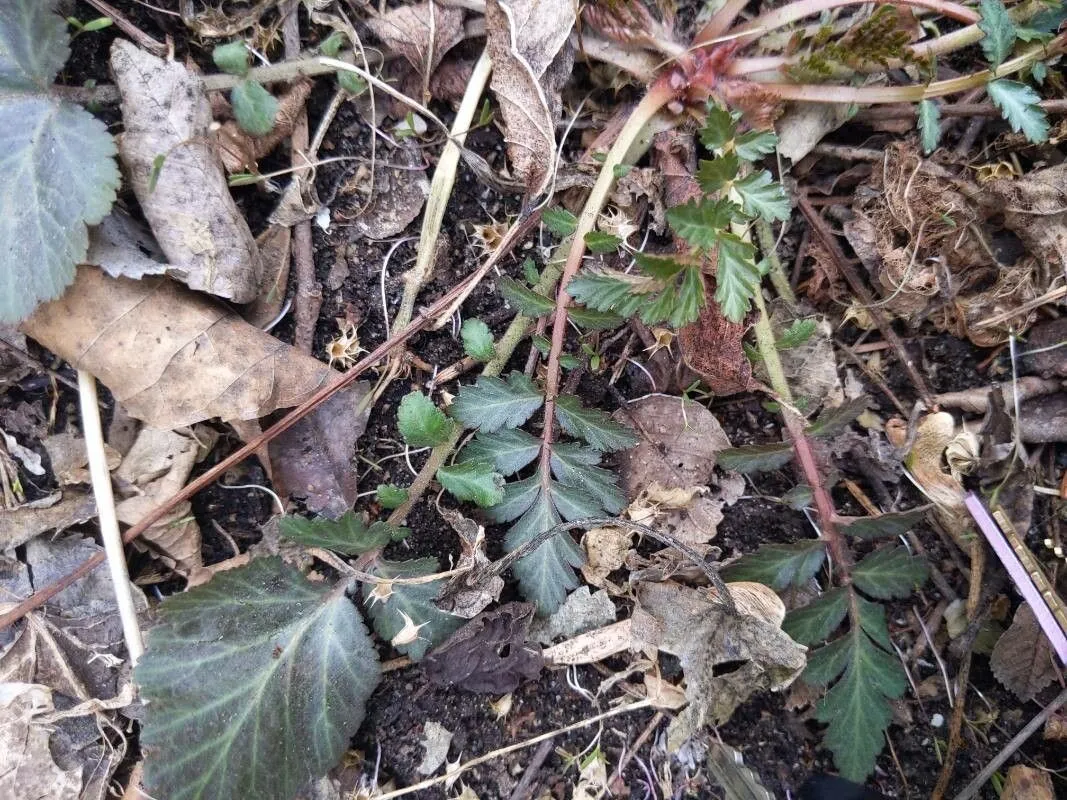
Author: Jacq.
Bibliography: Hort. Bot. Vindob. 2: 82 (1773)
Year: 1773
Status: accepted
Rank: species
Genus: Geum
Vegetable: False
Observations: C. & E. Canada to WC. & E. U.S.A., C. & S. Mexico
White avens, scientifically known as Geum canadense, is a captivating and versatile plant belonging to the Rosaceae family. This plant has been known to thrive across a wide geographic range, from the central and eastern regions of Canada to the western and eastern United States, and extending further south into central and southern Mexico. As described by Jacquin in Hort. Bot. Vindob. (1773), White avens has made its mark in the botanical world, both historically and ecologically.
Characterized by its delicate white flowers, White avens typically blooms from early summer to late autumn. Each flower, usually about one centimeter in diameter, consists of five white petals that contrast beautifully against the vivid green foliage. The plant’s leaves are predominantly basal, with the upper leaves being smaller and situated along the stem. These leaves often have a jagged, saw-toothed appearance, enhancing the plant’s textural appeal.
Geum canadense is commonly found in woodland areas, along roadsides, and in shaded environments. It prefers moist and well-drained soils, making it an adaptable addition to various landscapes and garden settings. The plant is known for its ability to spread, often creating lush ground cover, which can help with soil stabilization and erosion control. Moreover, White avens plays a role in local ecosystems by providing food and habitat for various pollinators, including bees and butterflies.
Despite its beauty and ecological benefits, White avens is relatively low-maintenance. It can self-seed readily, therefore it may require occasional management to prevent it from becoming overly dominant in gardens where plant diversity is desired. Nonetheless, its rustic charm and ease of care make it a favored choice for gardeners seeking to cultivate a naturalistic, perennial ground cover.
In traditional herbal practices, parts of the Geum canadense plant have been used for their medicinal properties, although it is always recommended to consult with a healthcare provider before using any plant for medical purposes.
Overall, White avens is a valuable and enduring member of the flora within its native regions. Its pleasant aesthetic, environmental contributions, and historical significance render it a remarkable plant worthy of both appreciation and study.
Deu: kanadische nelkenwurz
Eng: white avens, canada avens
Swe: vit nejlikrot
Fra: benoîte du canada, benoîte blanche
En: White avens, Canada avens
Fr: Benoîte du Canada, Benoîte blanche
De: Kanadische Nelkenwurz
Sv: Vit nejlikrot
Taken Apr 20, 2022 by Kimberly Weber (cc-by-sa)
Taken Apr 20, 2022 by Kimberly Weber (cc-by-sa)
Taken May 21, 2019 by Nancy Schiano (cc-by-sa)
Taken Apr 24, 2022 by mamabeeknee (cc-by-sa)
Taken Oct 23, 2022 by Thierry Thierry Bessière (cc-by-sa)
Taken Jun 18, 2021 by Michel G (cc-by-sa)
Taken Jul 30, 2022 by d Allen (cc-by-sa)
Taken Jun 13, 2022 by Stéphanie lord (cc-by-sa)
Taken Jul 9, 2020 by Jackson Campbell (cc-by-sa)
Taken May 31, 2021 by Diana Gilpatrick (cc-by-sa)
Taken May 20, 2019 by Nancy Schiano (cc-by-sa)
Taken Jul 30, 2022 by d Allen (cc-by-sa)
Taken May 31, 2021 by Diana Gilpatrick (cc-by-sa)
Growth form: Single Stem
Growth habit: Forb/herb
Growth rate: Moderate
Ph maximum: 7.5
Ph minimum: 4.5
Family: Myrtaceae Author: (F.Muell.) K.D.Hill & L.A.S.Johnson Bibliography: Telopea 6: 402 (1995) Year: 1995 Status:…
Family: Rubiaceae Author: Pierre ex A.Froehner Bibliography: Notizbl. Bot. Gart. Berlin-Dahlem 1: 237 (1897) Year:…
Family: Sapindaceae Author: Koidz. Bibliography: J. Coll. Sci. Imp. Univ. Tokyo 32(1): 38 (1911) Year:…
Family: Asteraceae Author: A.Gray Bibliography: Pacif. Railr. Rep.: 107 (1857) Year: 1857 Status: accepted Rank:…
Family: Fabaceae Author: Medik. Bibliography: Vorles. Churpfälz. Phys.-Ökon. Ges. 2: 398 (1787) Year: 1787 Status:…
Family: Aspleniaceae Author: (Cav.) Alston Bibliography: Bull. Misc. Inform. Kew 1932: 309 (1932) Year: 1932…